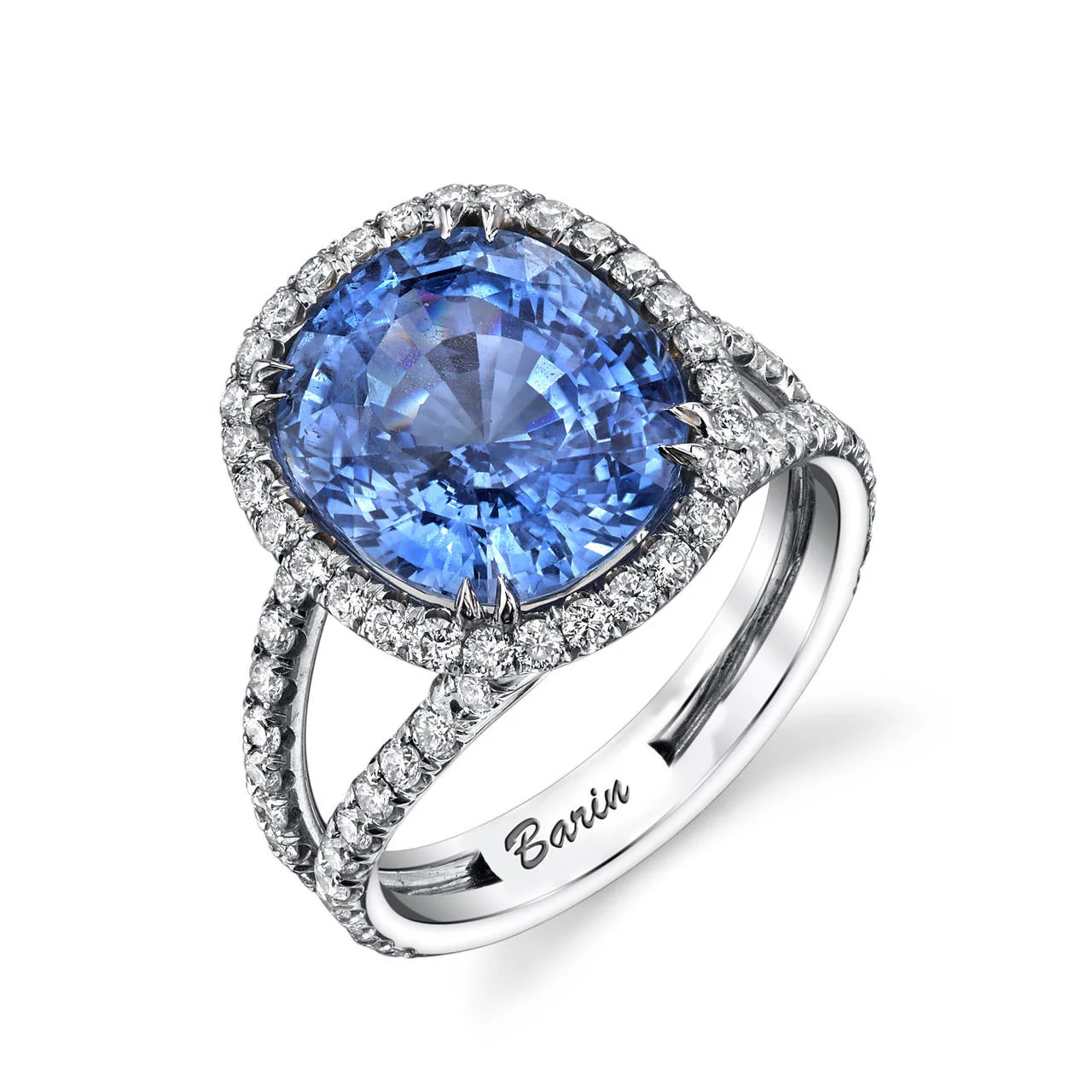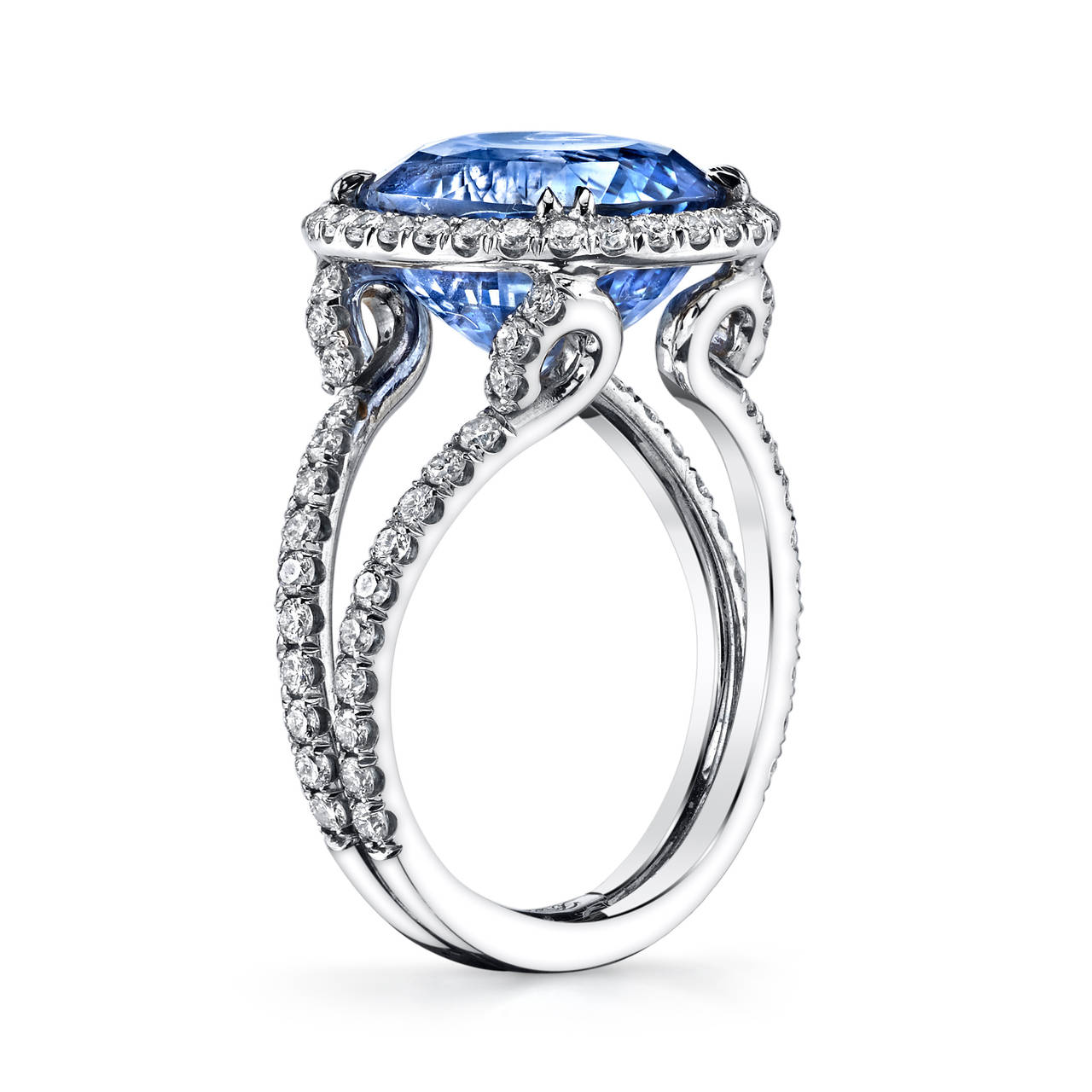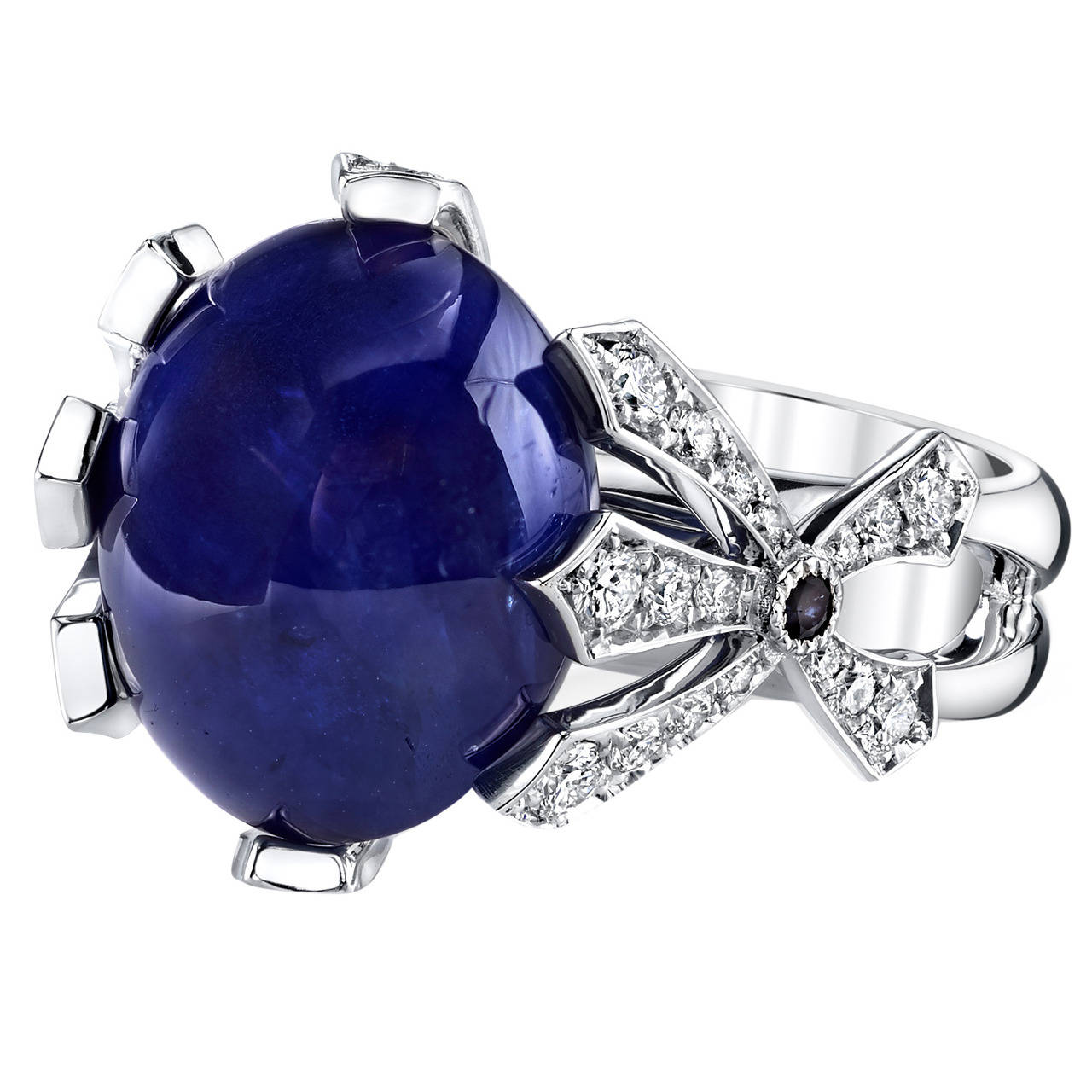Blue Sapphire Ring
A unique ring with an intricate design, this is truly a work of art that will get you noticed. The center stone, a GIA Certified Cabochon Cut Sapphire, is suspended by whimsical White Gold prongs that are studded with Diamonds and Sapphires. 16.11 Ct Cabochon Sapphire set in 18 Karat White Gold and accented with 0.42 Ct Diamonds and 0.04 Ct Sapphires. The center stone measures 14.73 x 13.25 x 8.81 mm. This ring is currently a size 6.75, but can be sized anywhere between a size 4.75 and 8.75.
September Birthstone (Sapphire)
For those who were born in the month of September the Sapphire is the traditional birthstone. Sapphires are one of the four precious gemstones (the other three are diamonds, rubies, and emeralds).
Sapphires come in almost any color imaginable, but you may be curious as to what makes this gemstone so versatile. Ready for another chemistry lesson?
A sapphire is a gemstone variety of the mineral corundum, among the strongest natural gemstones in existence. Pure corundum is colorless, but minute trace elements give the gemstone its signature variety of colors. Blue sapphires, for example, are colored by a combination of the trace elements iron and titanium. Iron and chromium create gold and orange sapphires, while chromium yields pinks and reds. The many combinations of trace elements result in extraordinary colored sapphires sometimes referred to as fancy color sapphires. Most natural sapphires are exposed to heat in order to improve their color and clarity. This practice is widely accepted and results in more vibrant, stronger stones that are more resistant to accidental chipping and breakage.
The word “sapphire” comes from the Latin word “sapphiru,” meaning "blue." Cornflower blue sapphires, also known as Kashmir sapphires, are the most valuable. These stones are often associated with loyalty and dignity, making them a top choice for royalty. In fact, members of the Vatican traditionally wore blue sapphires because the gems were believed to represent purity of purpose and deed.
The largest cut and polished sapphire, the Millennium sapphire, was discovered in Madagascar in 1996 and has a weight of 61,500 carats.





